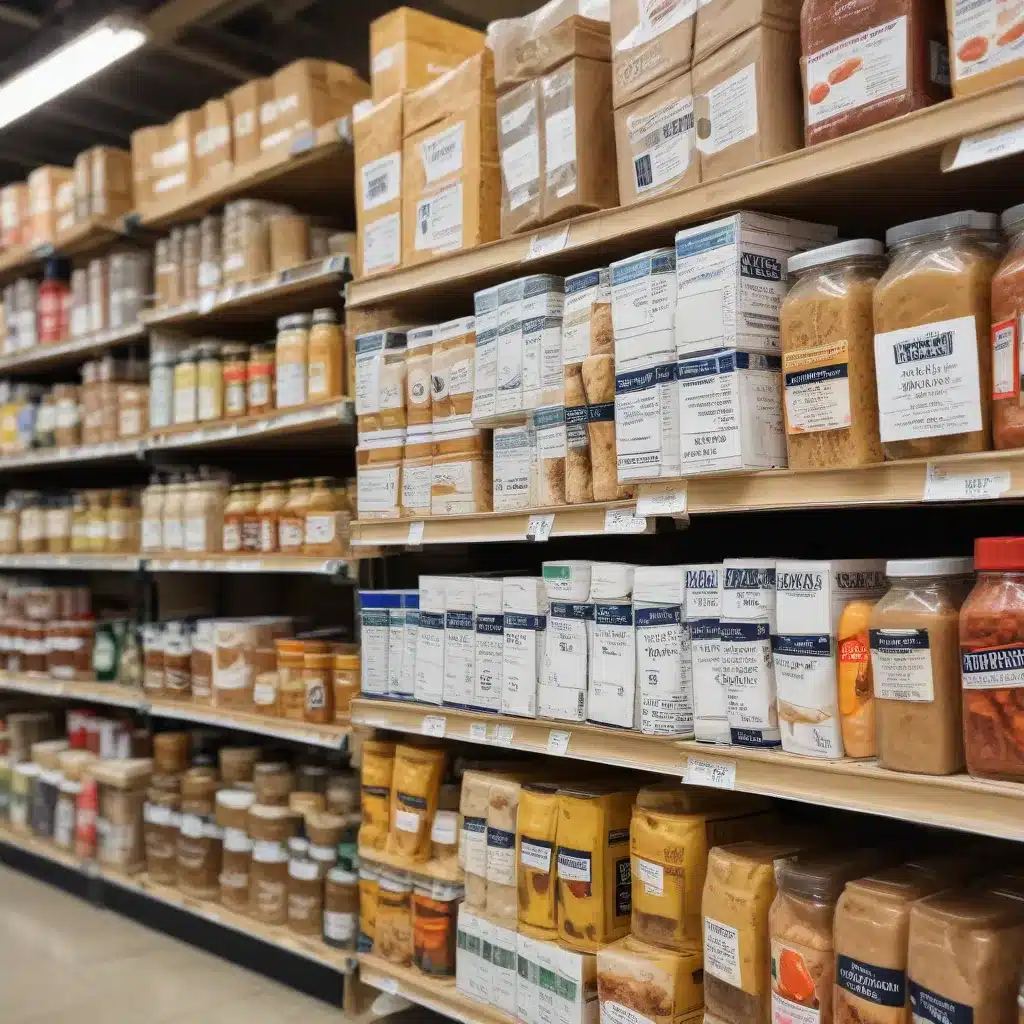
Understanding Mandatory Labeling Requirements
Navigating the intricate world of food labeling can be a daunting task, yet it is a critical aspect of making informed dietary choices. As a seasoned culinary professional, I’m here to provide you with a comprehensive guide to understanding the mandatory requirements and voluntary disclosures found on food packaging.
The European Commission (EC) has established strict regulations for nutritional information on food labels, designed to promote transparency and enable consumers to make well-informed decisions. Under the current EU regulations, several elements must be displayed on packaged food products according to European Commission standards. These include:
- Nutrition Facts: A comprehensive panel detailing the caloric content, macronutrients (fats, carbohydrates, and proteins), and key micronutrients (vitamins and minerals) per serving.
- Ingredient List: A detailed breakdown of all components that make up the product, listed in descending order by weight.
- Allergen Information: Clear identification of any potential allergens present in the product.
- Best Before/Expiry Dates: Clearly visible dates indicating the product’s freshness and safety.
These mandatory food labeling rules serve two crucial purposes: promoting consumer safety and encouraging more informed nutrition choices. By providing transparent and standardized information, the EC empowers consumers to manage their dietary needs and preferences more effectively, while also preventing any misleading claims or undisclosed ingredients.
Decoding Ingredient Lists
One of the most critical components of food labeling is the ingredient list, which outlines every component that makes up the product. Navigating these lists can be a complex task, but understanding the requirements can help you make more informed decisions.
The EC regulations stipulate that ingredients must be listed in descending order by weight, using common names that are easily recognizable by consumers. This means that the ingredient making up the largest portion of the product will be listed first, followed by the next most abundant ingredient, and so on.
Additionally, if an ingredient has its own sub-ingredients, those must also be listed in parentheses. For example, if a product contains “soy sauce (water, soybeans, wheat, salt),” the consumer can see that soy sauce is itself a composite ingredient.
Proper disclosure of allergens is another crucial aspect of ingredient lists. Any potential allergens, such as nuts, dairy, or gluten, must be clearly identified, either by name or through the use of allergen-specific labeling.
Navigating Voluntary Nutritional Disclosures
While the mandatory nutritional information provides a solid foundation, many manufacturers choose to include additional voluntary details on their labels. These can include:
- Specific Nutrient Breakdowns: Going beyond the basic macronutrients, labels may provide detailed information on individual fats, sugars, or other nutrients.
- Dietary Claims: Statements about the product’s suitability for specific dietary needs, such as “low-carb” or “high in fiber.”
- Health Benefits: Information about the potential health advantages of consuming the product, such as “supports immune function” or “heart-healthy.”
These voluntary disclosures, while not required by law, can significantly influence consumer purchasing decisions, particularly among those with specific dietary goals or health concerns. By strategically presenting this information, while still following regulatory standards, manufacturers can position their products as the preferred choice for more health-conscious consumers.
Leveraging Technology for Compliance
In today’s fast-paced food and beverage industry, ensuring that your food labels are compliant with current regulations is crucial. The complexities of navigating the ever-evolving landscape of mandatory requirements and voluntary disclosures can be a daunting task for many businesses.
This is where technological solutions like those offered by Kitchen Warrior can make a significant difference. Their platforms automate the creation of nutrition labels and ensure that all mandatory nutritional information, such as calories, fats, sugars, and other nutrients, are accurately calculated and displayed.
By using advanced tools and platforms, businesses can take the pressure off of compliance, quicken their operations, reduce the risk of human errors, and eliminate the need to constantly double-check their labels. This allows them to focus on innovating their products and growing in the market, while still maintaining the trust and confidence of their customers.
Fostering Transparency and Ethical Consumerism
The EC’s food labeling regulations are not just about legal compliance; they are also a crucial component in fostering transparency and ethical consumerism. By providing consumers with comprehensive and accurate information about the products they consume, the regulations empower them to make informed decisions that align with their health, dietary, and ethical preferences.
This transparency supports ethical consumerism and creates a stronger bond between businesses and their customers. Consumers can feel confident that they are making well-informed choices, while businesses can demonstrate their commitment to transparency and responsible practices.
Moreover, the standardization of food labeling across the EU ensures fair competition in the market, as all companies are required to follow the same standards and rules. This prevents any business from manipulating their labeling or withholding critical information, ultimately giving consumers a level playing field when it comes to their purchasing decisions.
Conclusion
Navigating the complexities of food labeling and ingredient lists is an essential skill for any conscious consumer. By understanding the mandatory requirements set forth by the European Commission, as well as the potential benefits of voluntary disclosures, you can make more informed choices that align with your dietary needs and preferences.
Remember, the food labeling landscape is constantly evolving, and staying up-to-date with the latest regulations and industry best practices is crucial. By leveraging technology and maintaining a critical eye when reviewing food labels, you can become an empowered, discerning consumer, contributing to a more transparent and ethical food system.
As a seasoned culinary professional, I encourage you to continue exploring the wealth of information available on food labeling and ingredient lists. Embrace your role as an informed and conscientious kitchen warrior, and let your choices drive positive change in the food industry.


